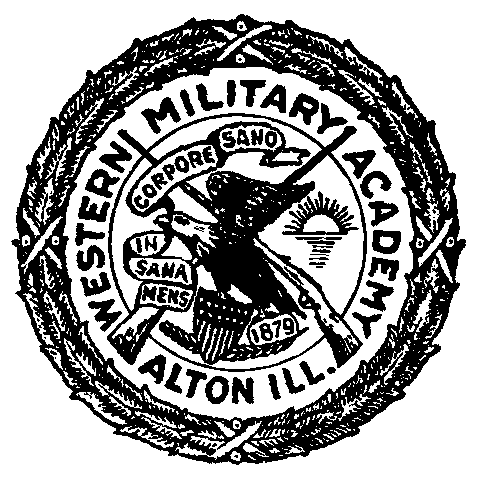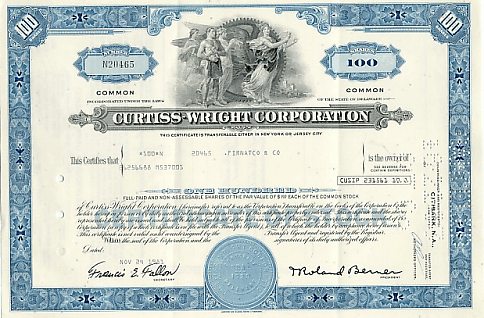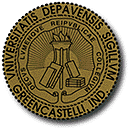
Three generations of Ainlays had their start in North America in the 19th century. Joseph Ainlay and his sons began their lives in Ontario, and one line of the family would continue to thrive in Canada. But Ainlay roots were transplanted when William Henry became a naturalized United States citizen. The last of the 19th century Ainlays would be born on American soil.
Albert "Alex" Ernest Ainlay
b. August 12, 1895, NY
...m. Ruth Susan Swartzendruber (July 19, 1923, OH)
.......b. Nadine (1925?, OH) - died as an infant
.......b. Thomas Ernest (1926, Plymouth, OH)
d. February 8, 1964, Chicago, IL
Alex's mother died when he was only three and a half years old. Three years later, his father William Henry remarried, and stepmother Mame Bush Ainlay cared for Alex and his two sisters, Alice May and Martha Elizabeth. Not much is known about those early years, but when Alex was fifteen, his father had him indentured to the Watson Machine Co. of Paterson, New Jersey. He was bound by contract to work there for four years, learning the machinist's trade. His wages increased annually from 75 cents per day in the first year to a dollar and a half in the fourth.
It is believed that Alex somehow managed to avoid military involvment during World War One. No record of his service exists. By 1923, he had made his way west to Ohio, where he met and married Ruth Susan Swartzendruber, who herself had only recently divorced from Horace G. Smith at age 29. Their first child, a daughter they named Nadine, died as an infant. Their second, a son, was born in Plymouth, Ohio, in 1926. Thereafter, the Ainlays moved to Hamilton, Ohio for a while before settling for several years in Columbus, Indiana, where Alex went to work for the Cummins Engine Company.
Albert "Alex" Ernest Ainlay's career as salesman of deisel-powered equipment took him to the Buda Company in Harvey, Illinois in 1938. He was a philanthropist who called bingo at dental service fund-raisers, donated generously to Boy's Town in Nebraska, and was even commended by the U.S. Treasury Department in 1945 for his role in the War Finance Program. Alex is remembered a dapper man, who always wore a coat and tie outside the house. He lived for a time in Denver, Colorado, where he was employed by Pettibone-Mulliken Corporation as a sales manager. He and "Ruthie" also resided briefly in Palo Alto, California, before resettling in Chicago, Illinois, where he spent the last years of his life. Alex died in 1964 of a stroke related to a blood clot in his leg, but tales will long survive of his parade of new cars, his travels (including a cruise to Puerto Rico), and his pranks and practical jokes, of which there were many.
.......Thomas Ernest Ainlay
.......b. July 6, 1926, Plymouth, OH
..........m. Betty Jean Herd (July 12, 1950, Belmont, CA)
..............b. Thomas Ernest Ainlay Jr. (1951, Longview, WA)
..............b. Paul Eric Ainlay (1955, San Jose, CA)
..........x. July 18, 1974, Rochester, IN
.......d. July 19, 1982, Brazil, IN

As an only child, Thomas Ernest Ainlay was doted on by his parents, Ruth and Alex. Despite the economic ravages of the Great Depression, they managed to provide him with an affluent lifestyle, stylish clothing, a spacious home, and even his own bicycle. He was an above-average student at Jackson Elementary School in Columbus, Indiana, but when the family moved to the southside of Chicago in 1938, Tom was sent off to a residential school, Western Military Academy (WMA) in Alton, Illinois. He had to skip half a grade to complete Junior High in 1939. He then spent the next four years at WMA as a cadet, playing on the baseball, basketball, football and soccer teams and serving on the editorial staff of the school's newspaper, the "Shrapnel." In 1942, he was inducted into the "Quill and Scroll," a national honor society for high school journalists. Only sixteen years old, he graduated from WMA with a 3.25 grade-point average in 1943, then went on to study pre-law for a semester at Indiana University before taking up engineering at Illinois Institute of Technology in early 1944.
Tom's formal education came to a halt in July 1944, when he turned 18 and was almost immediately inducted into the Army to serve in World War Two. He was trained as an automobile mechanic at Fort Bliss, Texas, narrowly missed acceptance into Officer Candidate School, and ended up in Europe serving under General Patton's 3rd Army during the last two months of the fighting against Germany in March-May 1945. Tom was honorably discharged with the rank of private first class in July 1946. He worked for his father Alex at the Buda Company briefly, before setting off on his own as a draftsman in Memphis, Tennessee, and then San Jose, California. He met and married Betty Jean Herd in 1950.

Tom Ainlay's knowledge of mechanical engineering brought him a succession of jobs on the West Coast. His first son, Tom Jr., was born in Longview, Washington in 1951. His second, Paul, was born in San Jose, California in 1955. When Tom's employer, the Woolridge Manufacturing Company, was acquired in a buyout in 1958, he was transferred to the new parent company and the Ainlays made their way back to the Midwest from Sunnyvale, California. They settled in South Bend, Indiana, where Tom worked in supervisory capacities, first for Curtiss-Wright, then for Sibley Machine and Foundry and Uniroyal of Mishiwaka. He later joined Bendix Corporation in St. Joseph, Michigan, as a traffic manager at a salary of $10,000 per year. He was an avid sports fan, who enjoyed golf and bowling. His favorite avocation, however, was the Boy Scouts, and he served as Scoutmaster of Troop 422 at South Bend's First Methodist Church for many years, leading the scouts on camping and canoeing trips as far away as Kentucky Lake on the Kentucky-Tenessee border. Both of his sons became Eagle Scouts under his leadership.
Unfortunately, years of chain smoking and drinking took a heavy toll on Tom's body. He was in poor health when he moved to Rochester, Indiana, in 1972 to work for Torin Corporation in charge of producing fan blades for air-conditioning units. He and Betty divorced in 1974, and he went to live for a short time with his mother, Ruth, in 1976, just prior to her death in Pomona, California. The last years of Tom's own life were spent in a nursing home in Brazil, Indiana, near his son Paul. Tom died in 1982 of a ruptured aorta. His ashes were scattered at Arlington National Cemetery, Virginia, by his children in 1987.
..............Thomas "Taj" Ernest Ainlay Jr.
..............b. 1951, Longview, WA
.................m. Shizue Takahashi (December 20, 1978, Tokyo, JPN)
.....................b. Tessera (1987, Tokyo, JPN)
.....................b. Shina (1991, Tokyo, JPN)
As the first son of four generations of Ainlay first sons born in North America, Thomas "Taj" Ernest Ainlay Jr. was accorded great expectations by his proud father. The transition from idyllic childhood in Sunnyvale, California, to no-nonsense Indiana schooling at age eight was difficult for the Ainlay namesake, but he soon began to excel in both studies and sports. By the time he graduated third in his class from South Bend Central High School in 1969, Tom Jr. had lettered in varsity football and swimming, won top prize at the Indiana State Science Fair, and achieved the rank of Eagle in the Boy Scouts.

To earn money for his college education, Taj shoveled snow, mowed lawns, and held summer jobs, first at Camp Tamarac in Jones, Michigan, as a cooking counsellor and dining steward, then at South Bend Memorial Hospital on the housekeeping staff. He later found income bussing tables in a pizza parlor, selling cutlery door-to-door, and shoveling coking coal and iron scrap into a blast furnance for brake parts. Thanks to such hard work, plus a Rector scholarship and several student loans, Taj attended DePauw University in Greencastle, Indiana, where he joined the Beta Beta Chapter of Sigma Nu. He played varsity football and bowled on the fraternity's intramural team. During his Junior year, he spent a semester at the Hellenic-American Institute in Greece, with opportunities to visit Egypt, Lebanon, Turkey, and Bulgaria, as well as several countries in Western Europe, as part of the College Year in Athens program. He became a Master in the American Contract Bridge League in 1972. Taj graduated from DePauw in 1973 with a double major in mathematics and English composition, just as the War in Vietnam, which he strongly opposed, was drawing to a close.
His wanderlust fueled by travel in Europe and the Middle East, Taj was anxious to go abroad again after completing school. He volunteered for the U.S. Peace Corps and was assigned to teach mathematics in Malaysia. He served at Maktab Rendah Sains MARA in Kuantan for two years. In 1976, after traveling extensively in Southeast Asia, Taj moved to Japan to study Zen Buddhism, teach English to Japanese businessmen and write articles for magazines. It was there in Tokyo that he met Shizue "Yuki" Takahashi, whom he married in December 1978. Taj founded a writers group called the "Tokyo English Literature Society" and its literary journal, Printed Matter. He found work as a fulltime copywriter in 1980 and won several international advertising awards. Taj and Yuki toured Europe and the United States together, with an opportunity to meet Tom Sr. before he died in 1982. Taj completed and published his first novel in 1984, a year before joining McCann-Erickson Hakuhodo Inc. as general manager of the ad agency's new direct marketing (DM) unit.
For nearly ten years, Taj made DM in Japan his specialty. He was elected to board positions by the Japan Telemarketing Association, the U.S. DM Association (in New York), the European DM Association (in Brussels, Belgium), and the American Chamber of Commerce in Japan. He became the head judge of the Asian DM Awards, and won several honors of his own, including Gold and Silver prizes from the Japan Direct Mail Association. He has been cited in Marquis's Who's Who in the World since 1989. In 1987, Taj and Yuki's first daughter, Tessera, was born. In 1991, the Ainlay family expanded again with the birth of her sister, Shina.
Taj joined TIME Inc. as Director of Consumer Marketing for North Asia in 1995. One of the highlights of his tenure with TIME was carrying the Olympic torch in the relay leading up to the Nagano Winter Games in 1998. In the tradition of his great-grandfather William Henry Ainlay, Taj has also been active in politics, elected Vice Chair of Democrats Abroad in Japan (1995-97) and Treasurer of the Democratic Party Committee Aboard (1997-99). He attended the Democratic National Convention in Chicago, Illinois, in August 1996 and the Presidential Inauguration in Washington, DC, in January 1997. Today, Taj has his own book publishing company in Tokyo, specializing in non-commercial personal histories, Legacy Memoirs.
..............Paul Eric Ainlay
..............b. 1955, San Jose, CA
.................m. Dawn Thompson (1974, Rochester, IN)
.................x. 1983, IN
.................m. Fujiko (February 13, 1987, Tokyo, JPN)
.....................b. Shuka Esther (1987, Tokyo, JPN
.....................b. Eria Ruth (1989, Tokyo, JPN)
.....................b. Santana Ezekiel (1993, Tokyo, JPN)
A native Californian by birth, Paul Eric Ainlay was raised a Hoosier in South Bend, Indiana. He attended South Bend Central and Lasalle-Central High Schools, before graduating in 1973 from Rochester High School in Rochester, Indiana, where he had moved with his father, Thomas Ernest Ainlay, a year earlier. Paul was a varsity football and baseball letterman. He also wrestled and swam. Involved in the Boy Scouts for many years, he was at one time officially recognized as the youngest American boy ever to reach the rank of Eagle Scout.
Paul attended DePauw University for three years, during which time he married Dawn Thompson, who was also a Class of '73 Rochester High School graduate. Balancing work, study, and marriage turned out to be too much of a burden, however, and in 1975 Paul left college to enter into partnership with his wife's parents and open a steak and seafood restaurant in Lafayette, Indiana. The venture was not successful, and Paul and Dawn divorced in 1983.
Paul continued to work for a time in the food and beverage industry in Indiana, learning the skills of sous chef and restaurant management. In the mid-1980s, he made his way to Colorado, where he attended the Culinary Institute in Denver before settling in the Vail-Beaver Creek ski resort community as a chef and banquet caterer. In 1986, he moved to Tokyo, Japan, at the suggestion of his brother Tom, and it was there that he met Fujiko, whom he married the following year. For eight years, Paul was the head chef of the Tokyo American Club. In September 1996, he opened his own tequila bar, D.B. Cooper's. Paul and Fujiko now have two daughters, Shuka and Eria, and a son, Santana. The Ainlay roots have thus been transplanted once again. From England to Canada to the United States to Japan, in a time period spanning two centuries, Ainlay namebearers have been born on three continents.
To continue with the AINLAY Family Tree, click here: 